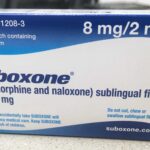Between 2005 and 2017, remote work increased by 159%. Despite this astronomical growth, the vast majority of employers kept their employees onsite. Then along came COVID-19, strongarming legions of employers into going remote.
According to Gartner, 82% of business leaders “plan to permit remote working some of the time as employees return to the workplace.”
Though remote work seems to be the new normal, a hidden danger lurks: substance use disorder.
Over 20 million people in the United States are addicted to alcohol or drugs. Further, the COVID-19 outbreak has triggered an uptick in drug abuse, as people grapple with the psychological and emotional impact of the pandemic.
Managers and HR professionals have the unenviable task of leading their organizations through a pandemic that’s propelling substance use disorders. Those with remote teams have an additional burden, as it’s typically easier for employees to use drugs on the job when they work from home.
How can you navigate the trifecta of remote work, COVID-19, and substance misuse? Below are four suggestions.
1. Build a targeted remote-work policy
Though onsite and remote employees are often subject to the same employment laws, certain regulations are specific to remote employees. If your organization has both remote and onsite employees, be sure to establish policies for each group and incorporate them into your employee handbook.
Do not rely on the handbook alone to communicate your remote-work policy, as employees are notorious for not reading their handbooks. You can instead send the remote-work policy to remote employees as a stand-alone document (in addition to the handbook).
With the stand-alone format, your remote employees will have a singular document right in front of them, instead of having to weed through the crowded handbook. No pun intended.
The remote-work policy should include your expectations for your remote team, including pre-employment drug screening plus guidelines for maintaining a drug-free workplace. Be extremely clear about the consequences of positive drug tests and refusal to submit to drug testing.
2. Train managers on spotting signs of drug use in remote employees
When employees work remotely, managers may (unwittingly) leave them to their own devices. This can erode oversight and the manager’s ability to promptly detect substance use and misuse.
Managers should check in regularly with their remote team via phone calls and video meetings, without micromanaging of course. These meetings can help strengthen communications while promoting a collaborative remote-work environment. They can also reveal employee behaviors that are indicative of drug use, abuse, or addiction.
Managers and HR professionals should be trained on how to recognize these behaviors, and how to determine whether there’s “cause for drug testing” — also called “reasonable suspicion testing.”
Such behaviors and signs include:
- Fidgetiness, twitching, unsteady movements
- Dilated or constricted eyes
- Slow or slurred speech
- Yawning, drowsiness
- Irritability, argumentativeness
- Extreme emotional reactions
- Decline in physical appearance
- Barely conscious, unresponsive to questions
- Not answering phone calls
- Missing deadlines
- Poor quality work
- Excessive tardiness
- Absenteeism
These behaviors and signs do not necessarily mean the employee is using illegal drugs. Other factors could be at play, such as a medical condition or legally-prescribed medication. Therefore, avoid jumping to conclusions and refrain from directly accusing the employee of being under the influence of an illicit substance.
A nuanced strategy is needed, and it can be learned through proper training.
3. Explore other options for drug testing remote employees
Some employers reportedly suspended drug testing during the initial months of the COVID-19 pandemic, to prevent employees from physically going to the testing location. However, pausing drug testing might not be prudent, as it can cause hiring/selection mistakes and intervention delays.
Consequently, many employers are finding ways to safely work around the pandemic. For example, some employers are directly administering point-of-collection drug tests, which can provide instant results or be sent off to a lab.
Some employers with remote teams “even mail the tests directly to applicants and use video calls to directly observe the employees online taking the tests,” says the New Jersey Business & Industry Association.
While it helps to seek alternatives, take care not to violate any employment, privacy, discrimination, or drug testing laws.
4. Lend a helping hand
Unfortunately, the battle with addiction is long, grueling, and complex, with the odds of relapse a hair’s breadth away. In fact, drug relapses are reportedly rising because of the COVID-19 pandemic. Fortunately, recovery is possible with commitment, determination, and support.
Employers can show their commitment and support by adopting a drug-free workplace program. According to SAMHSA,” Employers with successful drug-free workplace programs report improvements in morale and productivity and decreases in absenteeism, accidents, downtime, turnover, and theft.”
The program does not need to be expensive; there are free and low-cost ways to assist.
For example, at CareConnect USA we offer the following free resources:
- Rehab Helpline for Drugs and Alcohol
- Trusted Helplines App that instantly connects to government, nonprofit, and private help centers
- Federal and state COVID-19 hotlines
- Informational articles on drug use, abuse, and addiction
- A printable workplace breakroom poster for employees needing financial assistance. You can send the poster electronically to your remote team.
- “How to Beat Drug Addiction“
Additionally, you may offer an Employee Assistance Program (EAP), if you’re not already doing so. EAPs are designed to help employees cope with issues (like substance abuse and addiction) that may impact their job performance. EAPs are cost-effective, confidential, and available to employees and their family members.
An EAP generally costs employers between $12 and $40 per employee per year. If you have an EAP, or decide to implement one, make sure your remote team know it’s available.
Alternatively, you may call SAMHSA’s Drug-Free Workplace Helpline, which helps employers develop and maintain drug-free workplace programs. According to SAMHSA, the service is free and confidential.
Finally, let your remote employees know that rehabilitation assistance is only a phone call away. Call the Rehab Helpline for Drugs and Alcohol to speak with an expert.
Rehab Helpline for Drugs and Alcohol

Grace Ferguson
Business Writer
Grace Ferguson is a business writer and blogger covering payroll, employee benefits, and human resources. She has vast experience serving as a payroll and benefits administrator for large and small businesses.









